Potential of Community Volunteers in Flood Early Warning Dissemination: A Case Study of Bangladesh
Abstract
1. Introduction
2. Material and Methods
2.1. Semi-Structured Interviews (SSI)
2.2. Location of the Study and Sampling
2.3. Transcription
2.4. Data Analysis
3. Results
3.1. Access to FEW
We receive information of the water levels of the major rivers on a daily basis but during the rainy season we get hourly updates. Some of the information comes from the concerned ministries and the hydrological authority, some from the local leaders and some from locals living near the river banks. They send me information by email and fax, sometime I get phone calls. As I am directly related to the disaster management set up of this area, people keep sending me updates.
We receive flood related information from various sources, for example local politicians or people living close to the rivers and remote villages. They are the first to inform us about the water level rise and estimated damage. But we do not get any information directly from the Upazila Disaster Management Committee or Union Councils. I have heard of some mobile messages but I think everyone do not get messages, never heard of people talking about receiving such messages.
I mainly get the overall flood situation of the country from TV but the agricultural extension office provides me with important instructions that are helpful for my farm. There is a problem with the TV; we do not get continuous electricity. Whenever there is a strong wind or rain starts, the TV signal is interrupted.
…TV and radio news are enough to make people warned about the upcoming flood, but people do not realize the importance of these messages. That is why most of the time people are not adequately prepared.
From TV and radio we come to know mostly about the areas where the flood has already hit. Sometimes there are programs where they tell us how to prepare before a flood, but we don’t see them coming very often. Most of the time, we miss them because we remain busy in our daily work.
3.2. Role of Volunteers
There is no specific volunteer group in our area working independently in a disaster situation. But we see NGOs who play a benevolent role before, during and after a flood. They warn people about the destruction of floods, arrange health training and provide relief to the poorest. They also take part in the rehabilitation process. We see Bangladesh Scouts and Red Cross taking part in the relief distribution. But none of them have any mentionable activities prior to a flood event.
There are some volunteers who work to create awareness among school children. These volunteers are driven by some teachers who are involved with voluntary organizations. These types of activities are highly encouraging, but it is not a regular phenomenon.
I didn’t realize it earlier. But I am not authorized to disseminate any flood-related warning to the people.
I can help if the government wants me to.
We (UzDMC) pass required information and instructions to the UDMCs for wide circulation among the populace. These committees take initiatives to pass the information to the masses using microphones and other means… It is not well organized but UCs are solely responsible for that.
3.3. Relationship between the UDMC and Volunteers
We have standing orders for UDMCs. There are clear instructions to arrange meetings in the UCs and plan for an upcoming disaster event. It is our responsibility to disseminate flood warnings among the populace although we don’t know about any prescribed method for doing it. Within our limitations, when we get a FEW we try to disseminate the information using microphones and sending information to the remotest areas. Not every committee does the same. It depends on the decision of the committees.
UDMCs are not very active. They are supposed to sit in a meeting every month but as far I know they only arrange meetings in emergencies. Most of the time, the main agenda is to formulate plans for relief distribution or recovery actions.
I do not have any direct contact with the UDMCs but I am informed about their activities very often. I communicate with the committee members to get updated information of the overall flood situation and the role of the government. I am not a part of the committee. But they ask for my help in the relief and rehabilitation process. I like to help the community people.
Various NGOs and voluntary organization such as Bangladesh Scouts and the IFRC attend the UzDMC. They share their information and receive instructions. They usually prepare for relief and rescue operations but at the community level the participation of the volunteers is spontaneous. They are not organized; they just appear after the disaster and take part in the relief and rescues missions.
3.4. Scope for Improvement
UDMCs are the last stage of the top-down disaster management process of the government. The success of flood management largely depends on these institutions. People reap benefits from the actions of these committees. That is why the accountability of these committees is an important factor. But they are hardly aware of the pre-flood measures that can decrease losses. Volunteers would be happy to get involved in such activities.
The UDMCs are weak at performing their duties. Though they have clear instructions, they hardly follow them. Very few people know about their activities. If other NGOs and local individuals can be involved in this committee, I think they can perform better.
I think mobile messages can reach me quickly, but I may miss it. We get lots of SMSs daily. We do not pay too much attention to them. So, it is better to make arrangements for public announcements using microphones. In this way there will be little chance to miss the information.
…volunteers are good people. They are neutral and people have faith in them. They can go door-to-door because they know well who needs to be warned. If they use the microphones of the mosques and the UCs, it will cover maximum people; and people can also ask them questions if they have any.
…they can be good help but they are not well organized in our rural community and you cannot always get them around. We can make separate committees in our villages and train them. But who would believe them if they are not empowered by any competent authority?
4. Discussion
4.1. Access to a FEW
4.2. Role of Volunteers
4.3. UDMC and Volunteer Relations
4.4. Scope for Improvement
5. Conclusions
Supplementary Materials
Author Contributions
Funding
Institutional Review Board Statement
Informed Consent Statement
Data Availability Statement
Acknowledgments
Conflicts of Interest
References
- Hammood, W.A.; Abdullah Arshah, R.; Mohamad Asmara, S.; Al Halbusi, H.; Hammood, O.A.; Al Abri, S. A Systematic Review on Flood Early Warning and Response System (FEWRS): A Deep Review and Analysis. Sustainability 2021, 13, 440. [Google Scholar] [CrossRef]
- Rahman, M.M.; Goel, N.K.; Arya, D.S. Study of early flood warning dissemination system in Bangladesh. J. Flood Risk Manag. 2013, 6, 290–301. [Google Scholar] [CrossRef]
- Molinari, D.; Handmer, J. A behavioural model for quantifying flood warning effectiveness. J. Flood Risk Manag. 2011, 4, 23–32. [Google Scholar] [CrossRef]
- Fernández-Nóvoa, D.; García-Feal, O.; González-Cao, J.; de Gonzalo, C.; Rodríguez-Suárez, J.A.; del Portal, C.R.; Gómez-Gesteira, M. MIDAS: A New Integrated Flood Early Warning System for the Miño River. Water 2020, 12, 2319. [Google Scholar] [CrossRef]
- Keys, C.; Cawood, M. Identifying and reducing inadequacies in flood warning processes: An Australian perspective. J. Flood Risk Manag. 2009, 2, 190–197. [Google Scholar] [CrossRef]
- Fakhruddin, S.; Ballio, F. Community Capacity and Needs Assessment on Flood Early Warning-A Case Study in Bangladesh. J. Geol. Geosci. 2013, 2, 1000135. [Google Scholar] [CrossRef]
- Shah, M.A.R.; Douven, W.J.A.M.; Werner, M.; Leentvaar, J. Flood warning responses of farmer house-holds: A case study in Uria Union in the Brahmaputra flood plain, Bangladesh. J. Flood Risk Manag. 2012, 5, 258–269. [Google Scholar] [CrossRef]
- Khan, I.; Razzaq, A.; Jan, A.; Riaz, S.; Shehzad, N. An analysis of community based flood early warning system in the State of Azad Jammu & Kashmir. Procedia Eng. 2018, 212, 792–800. [Google Scholar]
- Mastor, F.A.; Aziz, I.A.; Ismail, N.N.; Mehat, M.; Haron, N.; Wahyu, A. Conceptual design of pre-flood warning system based on user mobility. In Proceedings of the 2015 International Symposium on Mathematical Sciences and Computing Research (iSMSC), Ipoh, Malaysia, 19–20 May 2015; pp. 132–137. [Google Scholar]
- Persson, E.; Nyberg, L.; Svedung, I. Flood warning in a Swedish local risk management context. Disaster Prev. Manag. Int. J. 2015, 24, 383–396. [Google Scholar] [CrossRef]
- Keoduangsine, S.; Robert, R.; Stephen, P.G. A Review of Flood Warning Systems in Developed and Developing Countries. Int. J. Futur. Comput. Commun. 2014, 3, 172–176. [Google Scholar] [CrossRef]
- Einolf, C.J.; Prouteau, L.; Nezhina, T.; Ibrayeva, A.R. Informal, unorganized volunteering. In The Palgrave Handbook of Volunteering, Civic Participation, and Nonprofit Associations; Palgrave Macmillan: London, UK, 2016; pp. 223–241. [Google Scholar]
- Whittaker, J.; McLennan, B.; Handmer, J. A review of informal volunteerism in emergencies and disasters: Definition, opportunities and challenges. Int. J. Disaster Risk Reduct. 2015, 13, 358–368. [Google Scholar] [CrossRef]
- Gwimbi, P. Linking rural community livelihoods to resilience building in flood risk reduction in Zimbabwe. Jàmbá J. Disaster Risk Stud. 2009, 2, 80–89. [Google Scholar] [CrossRef]
- Habiba, U.; Shaw, R.; Hassan, A.W.R. Drought Risk and Reduction Approaches in Bangladesh. In Mountain Hazards and Disaster Risk Reduction; Springer: Singapore, 2013; pp. 131–164. [Google Scholar]
- Alam Khan, M.S. Disaster preparedness for sustainable development in Bangladesh. Disaster Prev. Manag. Int. J. 2008, 17, 662–671. [Google Scholar] [CrossRef]
- Prizzia, R. The Role of Coordination in Disaster Management; CRC Press: Boca Raton, FL, USA, 2008. [Google Scholar]
- Smith, P.J.; Brown, S.; Dugar, S. Community-based early warning systems for flood risk mitigation in Nepal. Nat. Hazards Earth Syst. Sci. 2017, 17, 423–437. [Google Scholar] [CrossRef]
- Marchezini, V.; Horita, F.E.A.; Matsuo, P.M.; Trajber, R.; Trejo-Rangel, M.A.; Olivato, D. A Review of Studies on Participatory Early Warning Systems (P-EWS): Pathways to Support Citizen Science Initiatives. Front. Earth Sci. 2018, 6, 184. [Google Scholar] [CrossRef]
- Morsy, M.M.; Goodall, J.L.; O’Neil, G.L.; Sadler, J.M.; Voce, D.; Hassan, G.; Huxley, C. A cloud-based flood warning system for forecasting impacts to transportation infrastructure systems. Environ. Model. Softw. 2018, 107, 231–244. [Google Scholar] [CrossRef]
- Penner, L.A. Volunteerism and Social Problems: Making Things Better or Worse? J. Soc. Issues 2004, 60, 645–666. [Google Scholar] [CrossRef]
- Zahidy, A.A.; Sorooshian, S.; Abd Hamid, Z. Critical success factors for corporate social responsibility adoption in the construction industry in Malaysia. Sustainability 2019, 11, 6411. [Google Scholar] [CrossRef]
- Izumi, T.; Shaw, R. Chapter 3 Role of NGOs in Community-Based Disaster Risk Reduction. In Urban Risk Reduction: An Asian Perspective; Emerald: Bingley, UK, 2012; pp. 35–54. [Google Scholar]
- Cho, M.; Bonn, M.A.; Han, S.J. Generation Z’s sustainable volunteering: Motivations, attitudes and job performance. Sustainability 2018, 10, 1400. [Google Scholar] [CrossRef]
- Britton, N.R. Permanent Disaster Volunteers: Where Do They Fit? Nonprofit Volunt. Sect. Q. 1991, 20, 395–414. [Google Scholar] [CrossRef]
- Bahari, S.F. Qualitative Versus Quantitative Research Strategies: Contrasting Epistemological and Ontological Assumptions. J. Teknol. 2012, 52, 17–28. [Google Scholar] [CrossRef][Green Version]
- Qu, S.Q.; Dumay, J. The qualitative research interview. Qual. Res. Account. Manag. 2011, 8, 238–264. [Google Scholar] [CrossRef]
- Barriball, K.L.; While, A. Collecting data using a semi-structured interview: A discussion paper. J. Adv. Nurs. 1994, 19, 328–335. [Google Scholar] [CrossRef] [PubMed]
- Kelman, H.C. Human use of human subjects: The problem of deception in social psychological experiments. Psychol. Bull. 1967, 67, 1–11. [Google Scholar] [CrossRef] [PubMed]
- Wikipedia. Available online: https://en.wikipedia.org/wiki/Ulipur_Upazila (accessed on 24 November 2021).
- Rahman, M.; Hiya, H.; Auyon, S.; Islam, M. Exploring the status of disaster risk reduction focusing coping strategies in Rangpur division of Bangladesh. Progress. Agric. 2018, 29, 195–204. [Google Scholar] [CrossRef]
- Ferdous, Z.; Zulfiqar, F.; Ullah, H.; Anwar, M.; Khan, A.M.R.; Datta, A. Improved management practices vis-à-vis farmers’ practices for rice-based cropping systems in Bangladesh: Yield gaps and gross margins. J. Crop. Improv. 2021, 35, 547–567. [Google Scholar] [CrossRef]
- Suen, L.-J.W.; Huang, H.-M.; Lee, H.-H. A comparison of convenience sampling and purposive sampling. Hu Li Za Zhi 2014, 61, 105–111. [Google Scholar] [PubMed]
- Braun, V.; Clarke, V. Using thematic analysis in psychology. Qual. Res. Psychol. 2006, 3, 77–101. [Google Scholar] [CrossRef]
- Parker, D.J.; Priest, S.J.; Tapsell, S.M. Understanding and enhancing the public’s behavioural response to flood warning information. Meteorol. Appl. A J. Forecast. Pract. Appl. Train. Tech. Model. 2009, 16, 103–114. [Google Scholar] [CrossRef]
- Khorram-Manesh, A.; Goniewicz, K.; Hertelendy, A.; Dulebenets, M. Handbook of Disaster and Emergency Management, 2nd ed.; Kompendiet: Gothenburg, Sweden, 2021. [Google Scholar] [CrossRef]
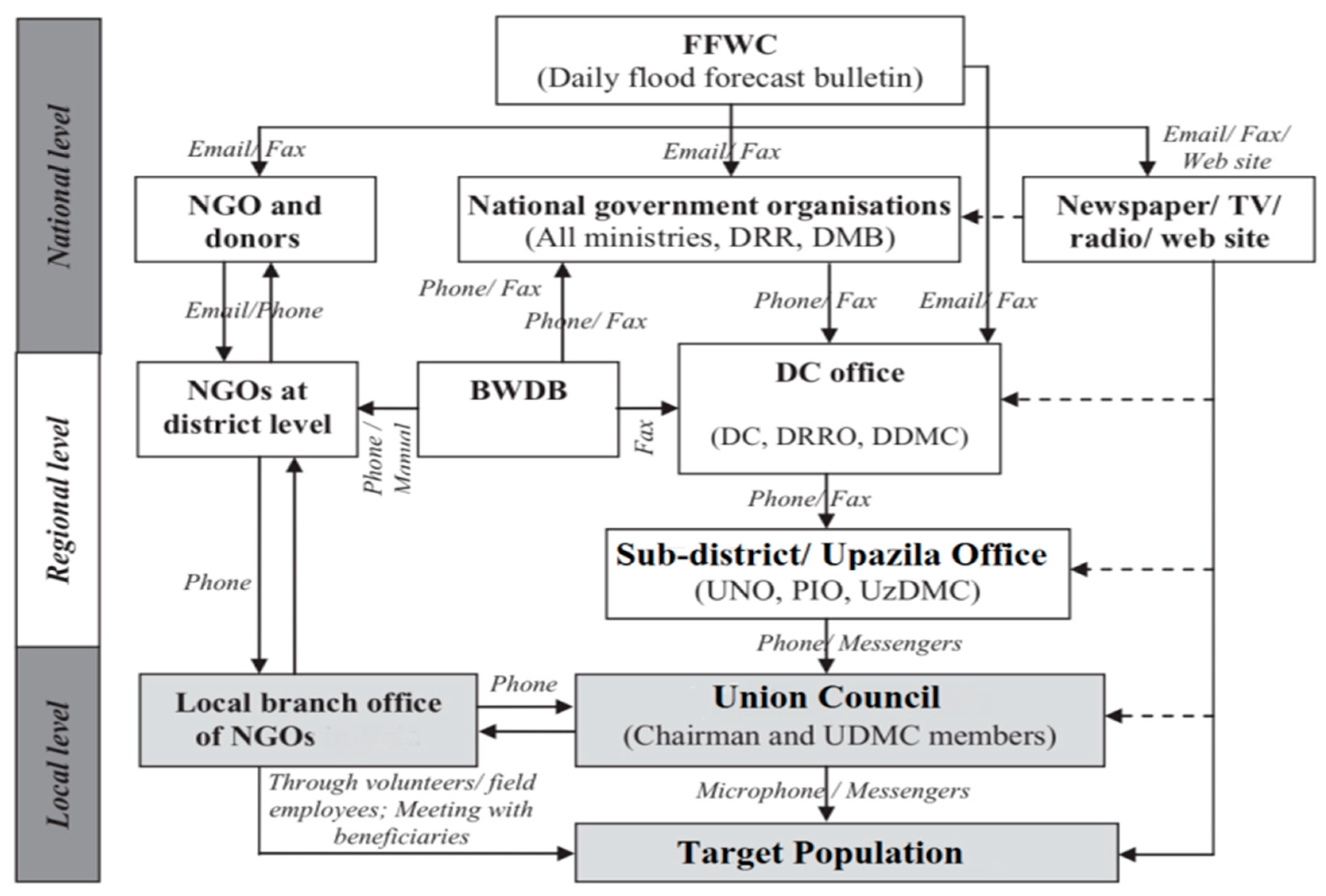
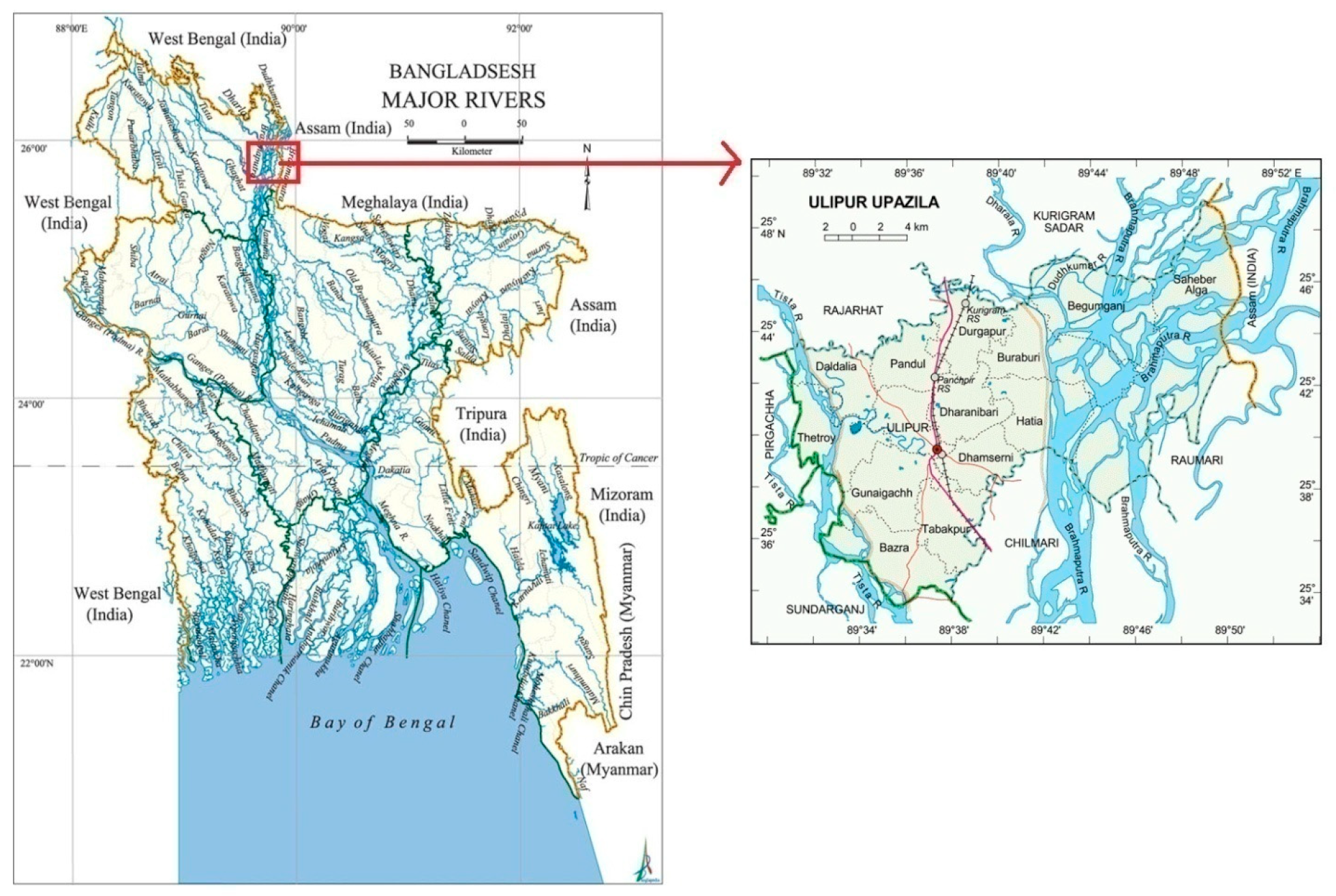
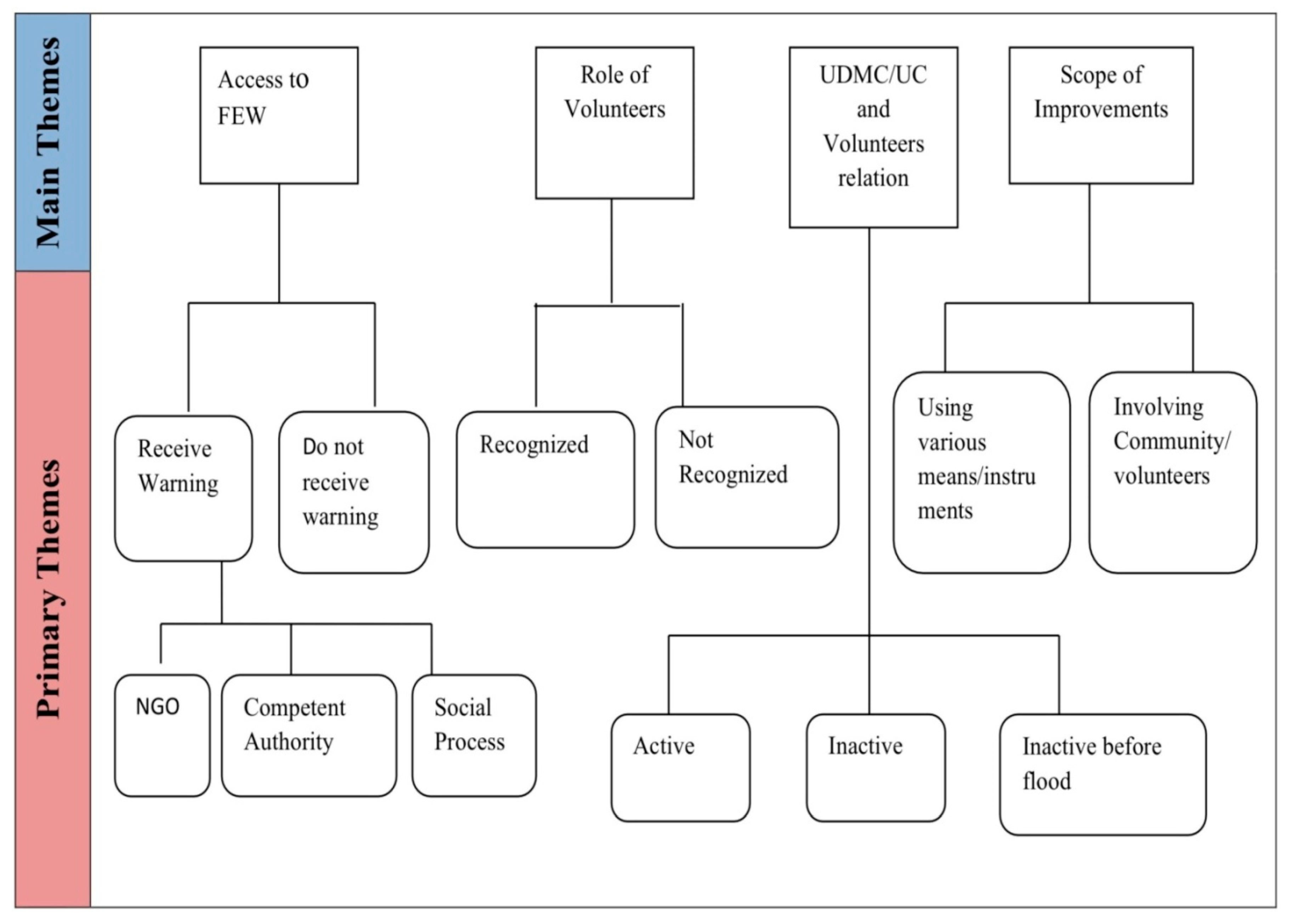
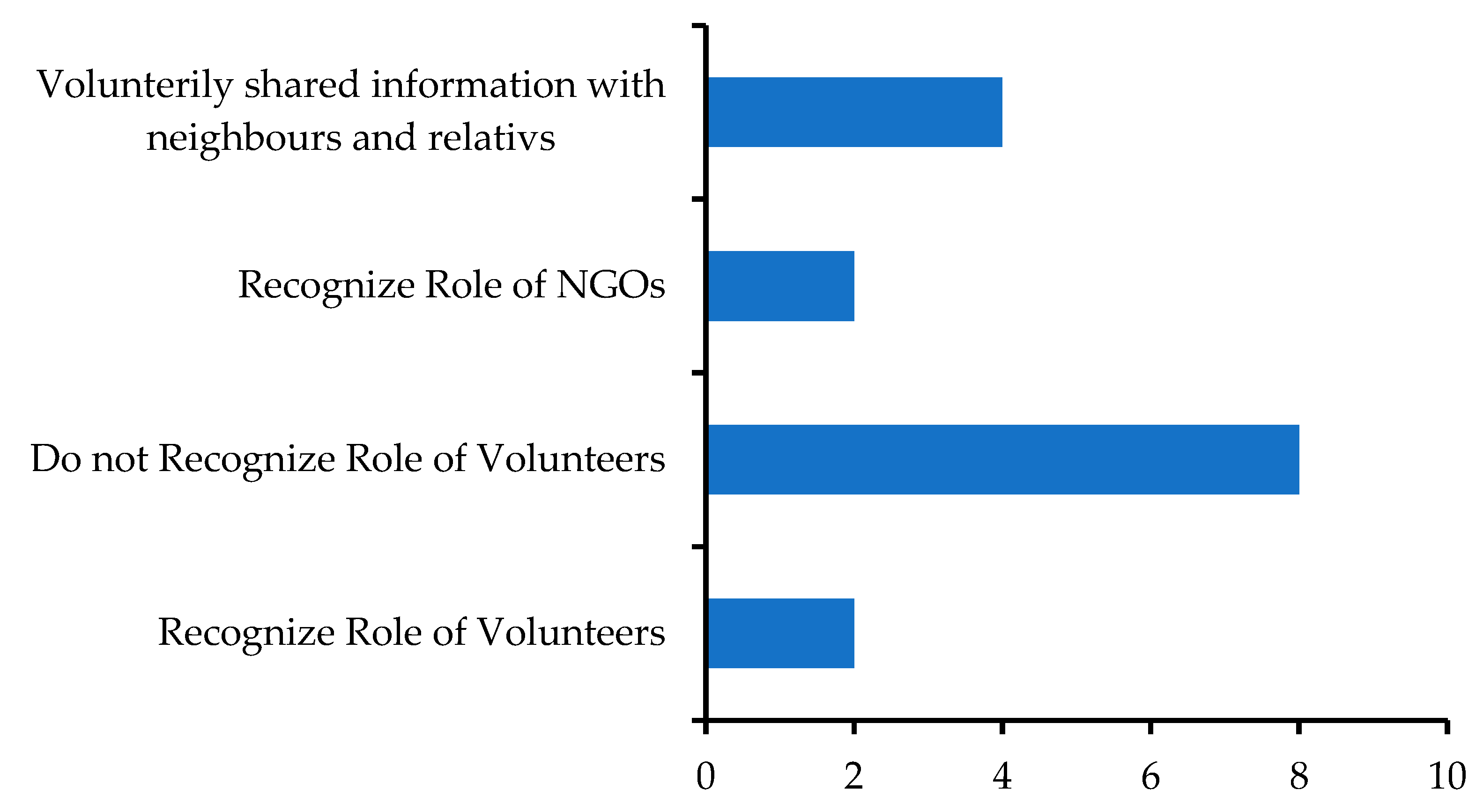
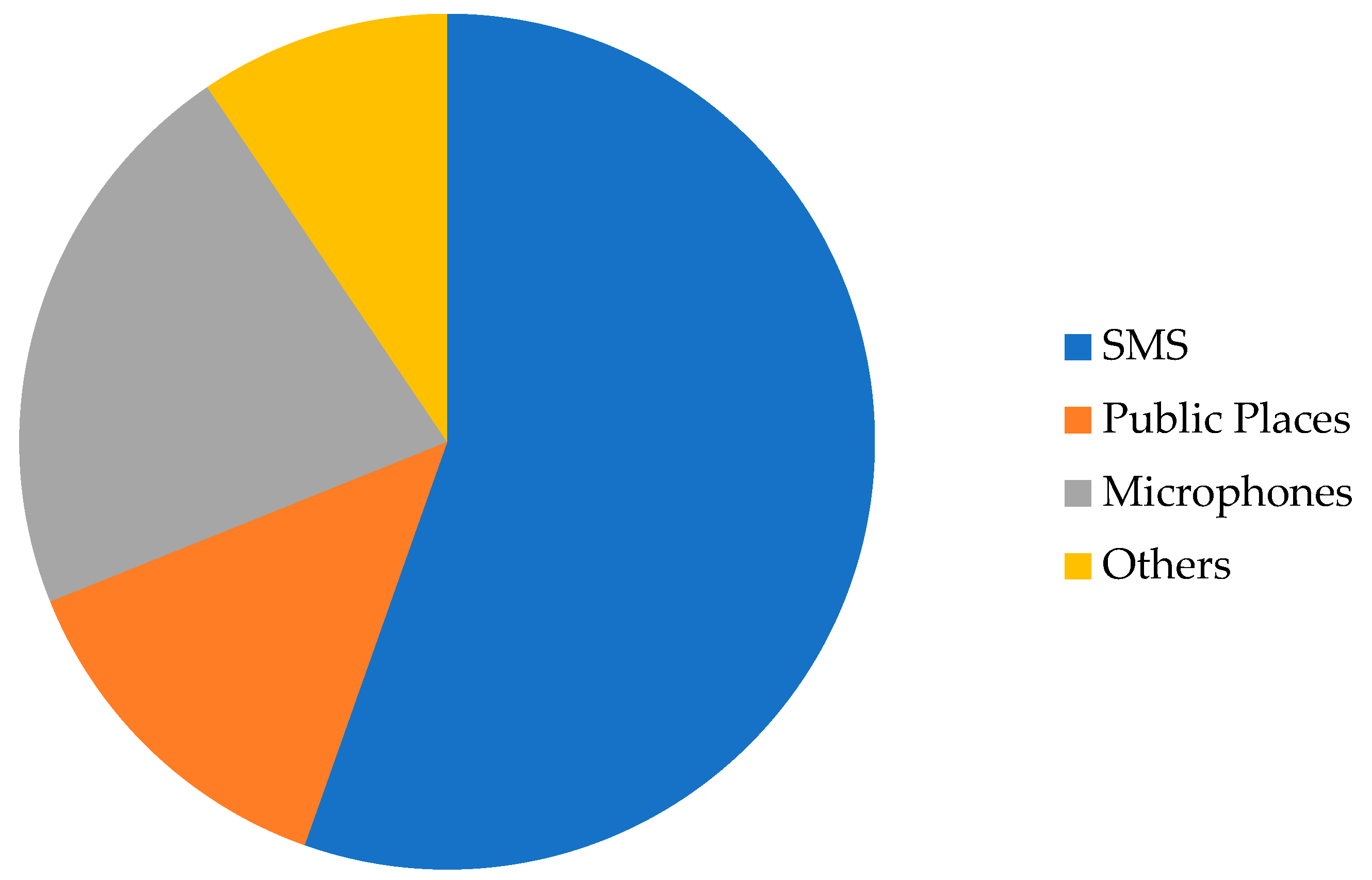
Publisher’s Note: MDPI stays neutral with regard to jurisdictional claims in published maps and institutional affiliations. |
© 2021 by the authors. Licensee MDPI, Basel, Switzerland. This article is an open access article distributed under the terms and conditions of the Creative Commons Attribution (CC BY) license (https://creativecommons.org/licenses/by/4.0/).
Share and Cite
Al-Mueed, M.; Chawdhery, M.R.A.; Harera, E.; Alhazmi, R.A.; Mobrad, A.M.; Althunayyan, S.M.; Al-Wathinani, A.M. Potential of Community Volunteers in Flood Early Warning Dissemination: A Case Study of Bangladesh. Int. J. Environ. Res. Public Health 2021, 18, 13010. https://doi.org/10.3390/ijerph182413010
Al-Mueed M, Chawdhery MRA, Harera E, Alhazmi RA, Mobrad AM, Althunayyan SM, Al-Wathinani AM. Potential of Community Volunteers in Flood Early Warning Dissemination: A Case Study of Bangladesh. International Journal of Environmental Research and Public Health. 2021; 18(24):13010. https://doi.org/10.3390/ijerph182413010
Chicago/Turabian StyleAl-Mueed, Murtuza, Md Rafique Ahasan Chawdhery, Emmanuel Harera, Riyadh A. Alhazmi, Abdulmajeed M. Mobrad, Saqer M. Althunayyan, and Ahmed M. Al-Wathinani. 2021. "Potential of Community Volunteers in Flood Early Warning Dissemination: A Case Study of Bangladesh" International Journal of Environmental Research and Public Health 18, no. 24: 13010. https://doi.org/10.3390/ijerph182413010
APA StyleAl-Mueed, M., Chawdhery, M. R. A., Harera, E., Alhazmi, R. A., Mobrad, A. M., Althunayyan, S. M., & Al-Wathinani, A. M. (2021). Potential of Community Volunteers in Flood Early Warning Dissemination: A Case Study of Bangladesh. International Journal of Environmental Research and Public Health, 18(24), 13010. https://doi.org/10.3390/ijerph182413010





